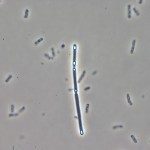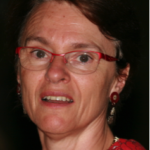Link to Pubmed [PMID] – 11390694
Microbiology (Reading, Engl.) 2001 Jun;147(Pt 6):1631-40
Little is known about the genes and enzymes involved in sulfur assimilation in Bacillus subtilis, or about the regulation of their expression or activity. To identify genes regulated by sulfur limitation, the authors used two- dimensional (2D) gel electrophoresis to compare the proteome of a wild-type strain grown with either sulfate or glutathione as sole sulfur source. A total of 15 proteins whose synthesis is modified under these two conditions were identified by matrix-assisted laser desorption/ionization time of flight (MALDI TOF) mass spectrometry. In the presence of sulfate, an increased amount of proteins involved in the metabolism of C(1) units (SerA, GlyA, FolD) and in the biosynthesis of purines (PurQ, Xpt) and pyrimidines (Upp, PyrAA, PyrF) was observed. In the presence of glutathione, the synthesis of two uptake systems (DppE, SsuA), an oxygenase (SsuD), cysteine synthase (CysK) and two proteins of unknown function (YtmI, YurL) was increased. The changes in expression of the corresponding genes, in the presence of sulfate and glutathione, were monitored using slot-blot analyses and lacZ fusions. The ytmI gene is part of a locus of 12 genes which are co-regulated in response to sulfur availability. This putative operon is activated by a LysR-like regulator, YTLI: This is the first regulator involved in the control of expression in response to sulfur availability to be identified in B. subtilis.

